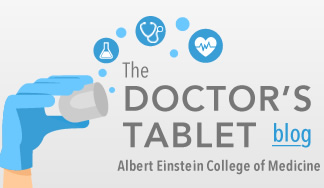
9/11 Cancer Study
World Trade Center-Exposed NYC Firefighters Face Increased Cancer Risk
September 1, 2011 – (BRONX, NY) – In the largest cancer study of firefighters ever conducted, research published in this week’s 9/11 Special Issue of The Lancet found that New York City firefighters exposed to the 9/11 World Trade Center (WTC) disaster site were at least 19 percent more likely to develop cancer in the seven years following the disaster as their non-exposed colleagues and up to 10 percent more likely to develop cancer than a similar sample from the general population.
The study evaluated the health of 9,853 WTC-exposed and non-exposed firefighters over the seven years following 9/11. The senior author was David Prezant, M.D., professor of medicine at Albert Einstein College of Medicine of Yeshiva University, an attending physician in the pulmonary medicine division at Montefiore, the University Hospital and academic medical center for Einstein, and chief medical officer of the Fire Department of the City of New York (FDNY). His co-authors were from Einstein, Montefiore and FDNY.
The terrorist attacks on the WTC on September 11, 2001 created an unprecedented environmental disaster in the New York City area. Many first responders, including about 12,500 FDNY firefighters, were exposed to potentially hazardous aerosolized dust consisting of pulverized cement, glass fibers, asbestos, lead, polycyclic aromatic hydrocarbons, polychlorinated biphenyls, and polychlorinated furans and dioxins produced as combustion byproducts from the collapsed and burning buildings. They were also exposed to potentially toxic fumes—initially from burning jet fuel and, during the 10-month recovery effort, from diesel smoke emitted by heavy equipment. Dr. Prezant has previously published several studies regarding the lung health of WTC-exposed first responders. The Lancet study was the first effort to assess the incidence of cancer among an entire WTC-exposed cohort—in this case WTC-exposed firefighters.
The authors were given access to health records for all firefighters in the study dating back to 1996, well before 9/11, available as part of FDNY’s rigorous health registry. The study investigators looked at cancer incidence and its possible association with exposure in the first seven years after 9/11. They compared the cancer incidence rates in WTC-exposed firefighters with cancer incidence in non-exposed firefighters and also with a sample of people selected from the U.S. National Cancer Institute’s Surveillance Epidemiology and End Results (SEER) database who resembled the firefighters with respect to age, race and ethnic origin.
When cancer incidence among WTC-exposed male firefighters was compared with cancer incidence in the SEER general-population sample, WTC-exposed firefighters were found to have up to a 10 percent increased risk for all cancers combined. When the same comparison was made between WTC-exposed and non-exposed FDNY firefighters, the cancer risk for the WTC-exposed firefighters (adjusted for surveillance bias) was at least 19 percent increased, based on an excess of 38 cancer cases among the WTC-exposed firefighters.
"[The study’s results] support the need to continue monitoring firefighters and others who responded to the World Trade Center disaster or participated in recovery and cleanup at the site."
-- David Prezant, M.D.In a report published two months before The Lancet study, the National Institute for Occupational Safety and Health (NIOSH) concluded that evidence at that time did not demonstrate a causal association between exposures resulting from the attacks on the WTC and cancer occurrence in responders and survivors. For this reason, the WTC Health Program determined that “insufficient evidence” existed to add cancer to the List of WTC-Related Health Conditions. The Lancet study authors expect this new study will feature prominently in the next NIOSH WTC cancer report scheduled for 2012.
The Lancet study also compared WTC-exposed and non-exposed firefighters with respect to cancer incidence at 15 specific sites in the body and found no sites for which the cancer incidence among WTC-exposed firefighters was significantly increased. However, a trend towards increased risk was noted in 10 of the 15 sites studied. The study noted that this failure to reach statistical significance may have been due to the small sample size available for these site-specific cancers. Analyses accounting for cigarette smoking status in WTC-exposed and non-exposed firefighters were similarly affected by small sample size. The authors note, however, that all nine WTC-exposed firefighters who developed lung cancer were smokers.
In explaining how exposure to WTC dust apparently led to an overall increase in cancer incidence among WTC-exposed firefighters, Dr. Prezant called the finding surprising due to the short latency period but “biologically plausible” because WTC exposure included polycyclic aromatic hydrocarbons, polychlorinated biphenyls and dioxins—all known carcinogens. He noted that WTC exposure also caused chronic inflammation and that such inflammation “has been implicated as a risk factor for cancer in experimental and epidemiological studies.”
The study’s results, said Dr. Prezant, “support the need to continue monitoring firefighters and others who responded to the World Trade Center disaster or participated in recovery and cleanup at the site. This monitoring should include cancer screening and efforts to prevent cancer from developing in exposed individuals.”
The study is titled “Early assessment of cancer outcomes in New York City firefighters after the 9/11 attacks: an observational cohort study.” Other authors at Einstein, Montefiore and/or FDNY were Rachel Zeig-Owens, M.P.H.; Mayris P Webber, Dr.PH.; Charles Hall, Ph.D.; Theresa Schwartz, M.S.; Nadia Jaber, R.P.A.-C; Jessica Weakley, M.P.H.; Thomas Rohan, M.B.B.S., Ph.D.; Hillel Cohen, Dr.PH.; Olga Derman, M.D.; Thomas Aldrich, M.D and Kerry Kelly, M.D. This study was funded by NIOSH.
For members of the media who would like to request an interview, please contact the FDNY Press Office at 718-999-2056 or via email at fdnyopi@fdny.nyc.gov.
Other Top Stories
9/11 World Trade Center Exposure Linked to Heart Disease Among NYC Firefighters
On Becoming a Physician: New Einstein Students Receive White Coats and Stethoscopes
Novel Therapy for Acute Migraine Shows Promise in Phase 3 Clinical Trial
First Complete Wiring Diagram of an Animal's Nervous System
Multimillion Dollar NIH Grant to Help Reduce Opioid Use & Get Care to People Who Need It
NIH Grant Funds $23 Million Study of Diseases Affecting People Living with HIV
New TAILORx Data Guides Adjuvant Therapy in Younger Breast Cancer Patients
Einstein Celebrates Its 61st Commencement
Bolstering Biopsies: Testing Patients' Individual Cells to Guide Treatment



